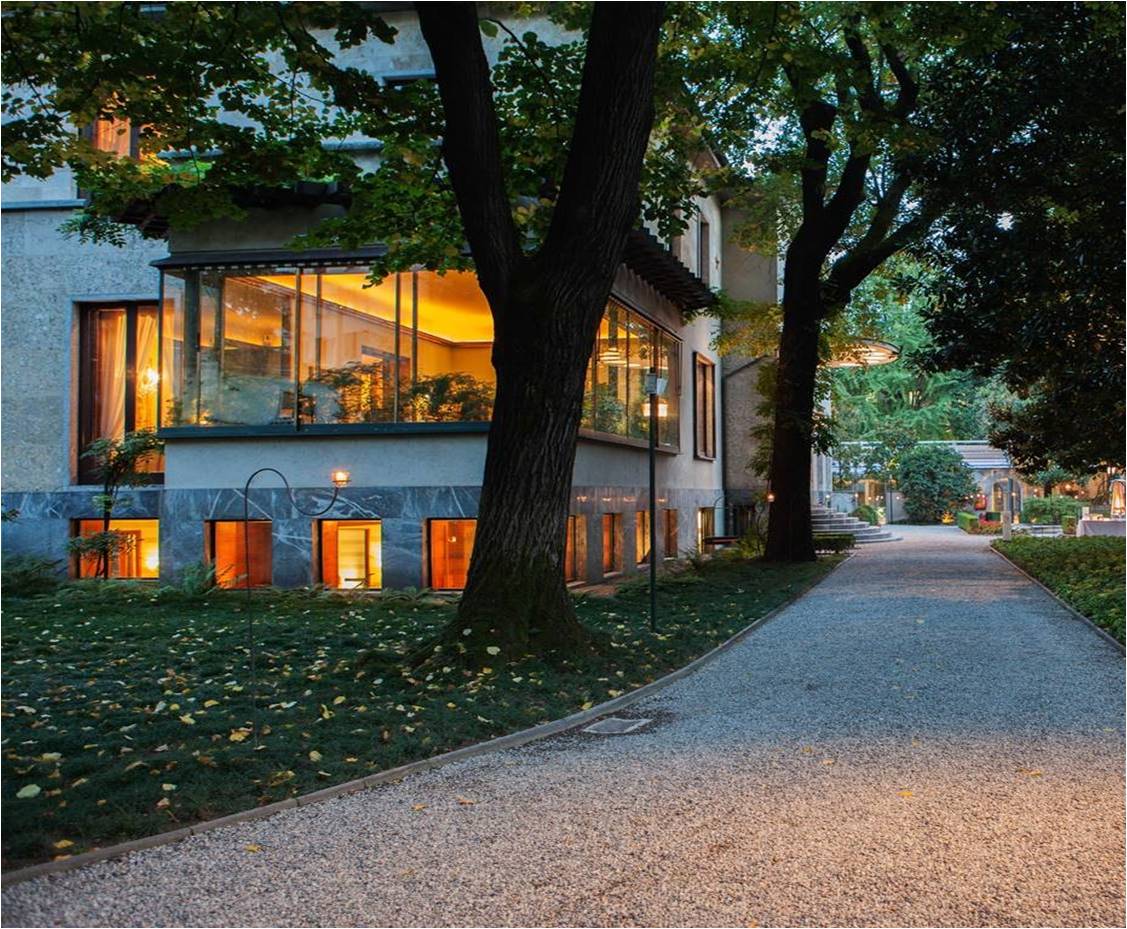Villa Necchi Campiglio provides an oasis of calm in the centre of Milan. Surrounded by a beautiful garden with swimming pool and tennis court, the villa is an unexpected find an otherwise hectic city.
Designed by Piero Portaluppi, Villa Necchi Campiglio was built between 1932 and 1935, at the height of rationalist and Fascist architecture. With its marble-trimmed facade and no-nonsense layouts , the three upstairs bedrooms and bathrooms branch off of a long corridor of closets, Villa Necchi was a modernist palate cleanser in a city chock-full of ornate palazzos.
It boasted a tennis court, a garage and Milan’s first heated swimming pool. Simply put, it was a gleaming status symbol for Italy’s brave new elite.
The house has remained intact, both on the outside and the inside, and provides a fascinating view into the lives of those who once lived and worked there. The collection of decorative arts and furnishings further help the visitor to imagine what life must have been like in the villa in the 1930s.
Villa Necchi’s soaring, impressively stolid rooms, with their lozenge stucco ceilings, walnut parquetry and heavy sliding doors, convey both an air of grandeur and a strict sense of discipline. In fact, in 1943, the house became a headquarters for the Fascist Republican Party, while the family repaired to the countryside.
Villa Necchi plays a central role in the 2009 film “Io Sono Amore” (I Am Love) directed by Luca Guadagnino and starring Tilda Swinton, a tragic love story set in Milan
Throughout the film, Swinton’s seemingly frail character stands in tense opposition to the weight of family and history.
For Guadagnino, Emma and Villa Necchi represent far more than just a figment of his imagination.
“This woman has the strength to go against everything,” he says.
“I like the idea of watching the destruction of a monolithic bourgeoisie that seems indestructible”.

